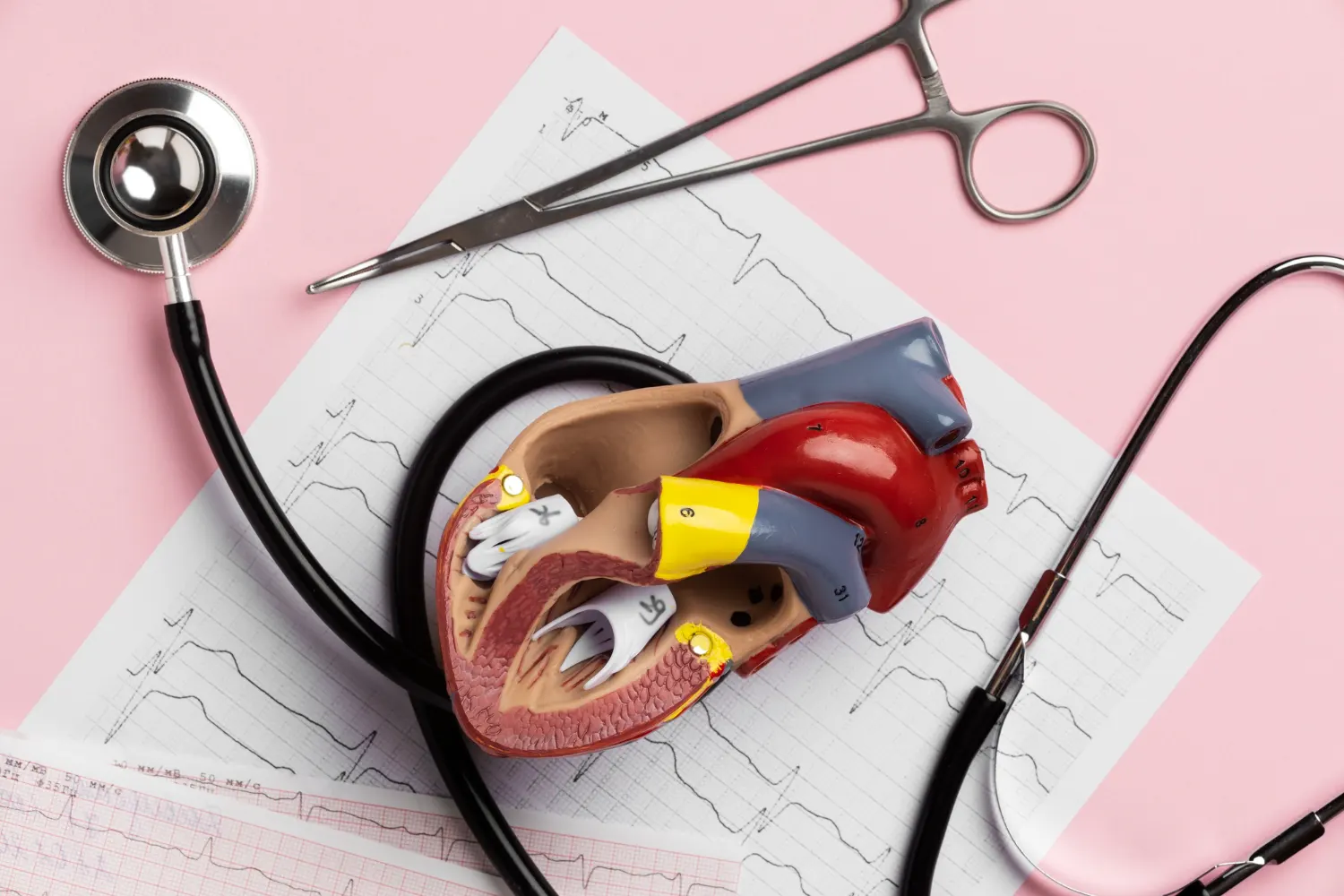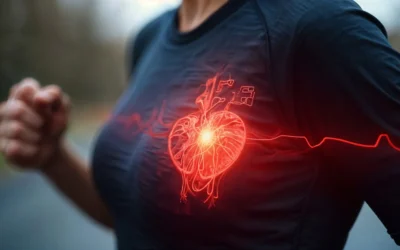Atherosclerosis, the progressive buildup of plaques inside the arterial walls, is a leading contributor to heart attacks and strokes. While often thought of as a result of poor diet or genetics, emerging research strongly supports another key factor in prevention: physical activity. A 2024 narrative review published in Biomedicines (PMID: 39443131) explores how various forms of exercise—particularly aerobic and resistance training—can prevent or slow atherosclerosis by targeting its underlying mechanisms.
This article unpacks those findings for the general public, focusing on what types of exercise matter most, how they protect the arteries, and how you can start building an anti-atherosclerosis workout routine today.
Table of Contents
What Happens in Atherosclerosis?
Atherosclerosis is a chronic inflammatory condition that begins with endothelial dysfunction—damage to the inner lining of arteries. This dysfunction allows lipoproteins such as LDL cholesterol to infiltrate the arterial wall, where they become oxidized and trigger a prolonged immune response. Over time, inflammatory cells like macrophages and T cells form foam cells and fatty streaks, which eventually develop into fibrous plaques. These plaques narrow the arteries and reduce elasticity, increasing the risk of ischemic events.
In short, atherosclerosis is not just about fat accumulation—it’s a dynamic process involving immune activation, oxidative stress, and vascular remodeling.
How Physical Activity Counteracts Atherosclerosis
Exercise is increasingly seen as a frontline defense against vascular disease. It targets the root physiological processes that fuel atherosclerosis rather than merely alleviating its symptoms. According to the review, exercise exerts protective effects through six main pathways:
| Mechanism | Exercise Impact |
|---|---|
| Endothelial function | Increases nitric oxide production, improving vasodilation |
| Oxidative stress | Enhances antioxidant enzymes, reducing ROS damage |
| Inflammation | Lowers pro-inflammatory cytokines (e.g., TNF-α, IL-6, CRP) |
| Lipid metabolism | Improves HDL/LDL ratio and lowers triglycerides |
| Glucose homeostasis | Enhances insulin sensitivity and glycemic control |
| Arterial stiffness | Maintains or restores vessel elasticity |
These physiological improvements are interrelated. For example, reduced oxidative stress enhances nitric oxide bioavailability, which further improves endothelial function.
Aerobic Exercise: Cardio for Your Arteries
Aerobic exercise, such as walking, cycling, or swimming, is the most extensively studied modality for cardiovascular protection. The review emphasizes its capacity to improve endothelial function and reduce systemic inflammation—both crucial in halting atherosclerotic progression. Regular aerobic training improves the release of nitric oxide, which helps vessels dilate more easily, improving overall vascular tone.
It also reduces circulating inflammatory biomarkers like interleukin-6 (IL-6) and C-reactive protein (CRP), both of which are elevated in people with vascular disease. Importantly, aerobic activity promotes favorable changes in lipid profiles and blood glucose levels, making it essential for people with metabolic syndrome or diabetes.
Practical Guidelines:
- Frequency: 5 days per week
- Duration: 30–60 minutes per session
- Intensity: Moderate (e.g., brisk walking) to vigorous (e.g., running)
Even modest efforts like a daily 30-minute walk can lead to significant cardiovascular benefits if sustained over time.
Resistance Training: A Powerful Ally in Vascular Health
Often underappreciated in cardiovascular prevention, resistance training—such as lifting weights or using resistance bands—has demonstrated unique vascular benefits. While it does not stimulate the same endothelial nitric oxide response as aerobic exercise, resistance training contributes to arterial health through reductions in arterial stiffness, improvements in glucose metabolism, and enhanced body composition.
These changes are especially relevant in older adults, who may experience age-related arterial stiffening and insulin resistance. Furthermore, resistance training helps preserve lean muscle mass, which supports metabolic health and long-term mobility—important for maintaining an active lifestyle.
Best Practices:
- Frequency: 2–3 sessions per week
- Target: All major muscle groups
- Volume: 2–3 sets of 8–12 repetitions
Combining resistance with aerobic exercise can amplify the vascular benefits, leading to improvements in both functional capacity and disease biomarkers.
Why Combined Exercise Works Best
The review highlights that multimodal exercise programs—those that integrate both aerobic and resistance components—yield the most comprehensive cardiovascular protection. By addressing distinct yet complementary mechanisms, combined training programs improve endothelial function, reduce blood pressure, improve lipid profiles, and lower markers of inflammation more effectively than either modality alone.
One study cited in the review found that participants who performed both aerobic and resistance training had significantly lower arterial stiffness and inflammatory markers than those who performed aerobic training alone. This synergistic effect makes combined training especially valuable for populations at high cardiovascular risk, such as individuals with hypertension, obesity, or metabolic syndrome.
How to Start: Building a Heart-Protective Exercise Routine
Getting started doesn’t require extreme fitness. What matters most is consistency and progressive adaptation. The following steps can help you build a realistic and sustainable plan:
- Start with your baseline: If you’re sedentary, begin with short walks and light resistance bands.
- Increase gradually: Add time, intensity, or resistance each week. Avoid jumping into high-intensity training too soon.
- Aim for variety: Combine different modalities to engage multiple physiological systems and prevent burnout.
- Track your progress: Use a journal or fitness tracker to monitor duration, intensity, and how you feel.
It’s also wise to consult a physician or exercise physiologist if you have known cardiovascular disease or risk factors.
Conclusion: Move to Protect Your Arteries
Physical activity does more than help you lose weight or build muscle—it directly protects your vascular health. Whether through aerobic endurance, resistance strength, or both, regular movement has the power to reverse the very processes that underlie atherosclerosis. The 2024 review makes it clear: if you want to prevent or manage heart disease, exercise isn’t optional—it’s essential.
So, don’t wait for symptoms to show. Your arteries start benefiting from movement right now—one walk, one lift, one heartbeat at a time.
Source
- Trovato, F. M., et al. (2024). Physical Activity and Atherosclerosis: A Narrative Review of the Pathophysiological Mechanisms and Exercise Modalities. Biomedicines. PubMed PMID: 39443131





0 Comments